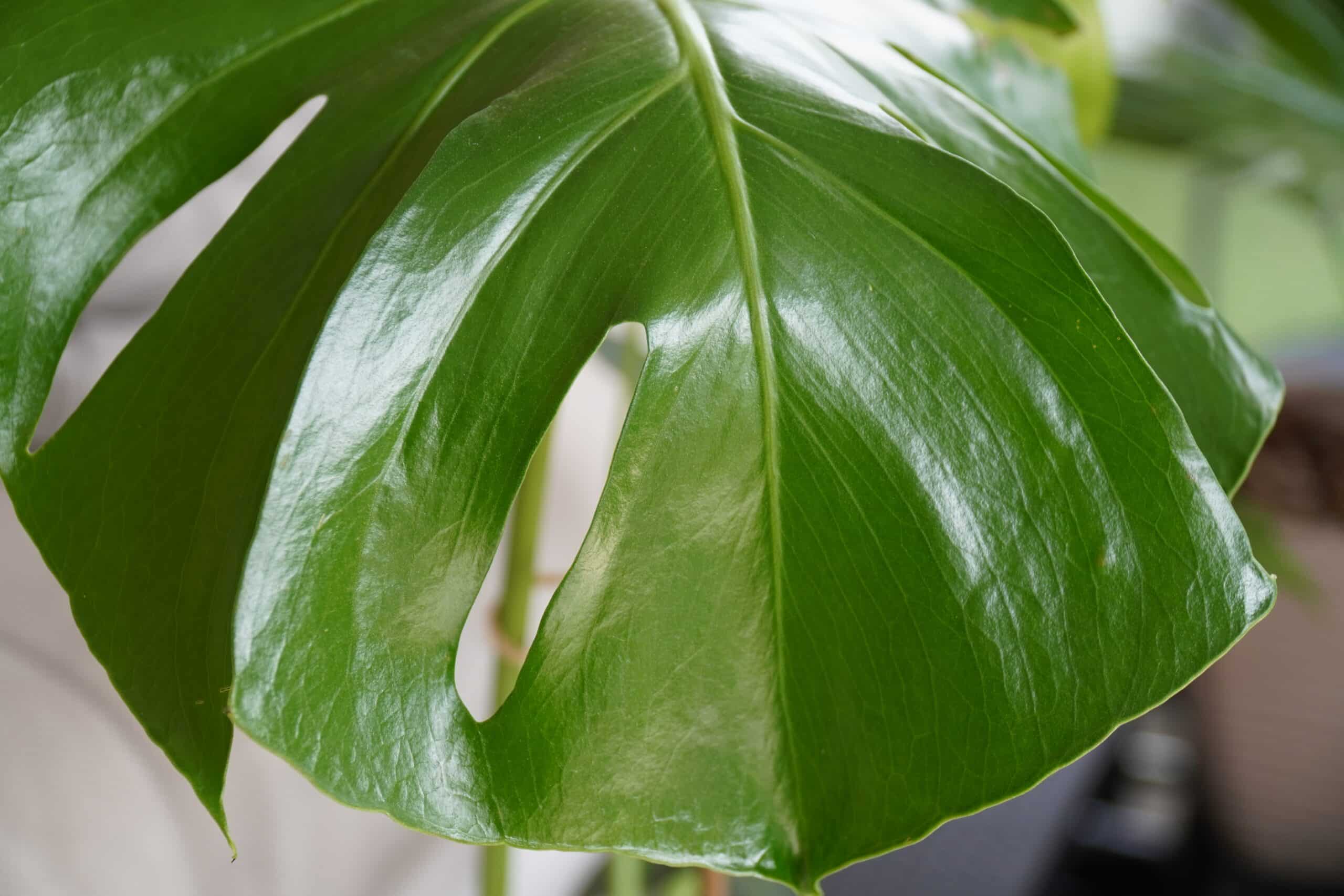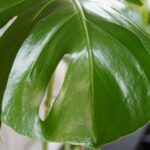The world of foliage plants is full of surprises, and the philodendron is no exception. A classic houseplant, these vibrant plants bring a touch of the tropical indoors and can be an easy addition to any home. With its lush green leaves and cascading vines, a philodendron resembles a waterfall in the middle of your living room, creating an oasis of peace and tranquility.
As one of the most popular indoor houseplants, there are dozens of varieties available with unique shapes, sizes, and colors. Whether you’re looking for something bold and dramatic or subtle and understated, there’s a philodendron variety that will fit your needs. Each one has different requirements for light, soil type, fertilizer, water, temperature range and humidity levels so it’s important to do research before choosing a variety that fits your lifestyle.
In this article we’ll discuss how to choose the right philodendron variety for your home as well as tips on how to care for it properly so it can thrive indoors year-round. We’ll explore how each plant is unique in its own way so you can find the perfect one to add life and beauty to your home or office space.
Overview Of Philodendron Varieties
Philodendrons come in a variety of shapes and sizes, offering plenty of options for those looking to add greenery to their home. Whether it’s the heart-shaped leaves of the philodendron scandens or the striking variegated foliage of the philodendron hederaceum, these plants bring a unique look and feel to any room. And when grown indoors, they provide numerous benefits for both people and pets alike.
To get started growing your own philodendrons indoors, you’ll need to make sure you pick the right variety for your space. Low-light varieties such as Philodendron selloum or Xanadu are great choices for darker corners where other houseplants might struggle. On the other hand, if you have access to plenty of bright light, then sun-tolerant species such as Philodendron bipinnatifidum or Philodendron melanochrysum can really show off their vibrant colors.
Once you’ve chosen a variety that suits your environment, it’s time to get planting! If you’re using soil, make sure it has good drainage and is at least partially composted. When it comes to watering and fertilizing, philodendrons require only moderate amounts; water once every two weeks during spring and summer then scale back in winter when growth slows down. With a little bit of care and attention, your new houseplant should be thriving in no time!
Benefits Of Growing Philodendron Houseplants Indoors
In a flash, the idea of growing philodendron houseplants indoors can seem like an exciting endeavor. With their lush foliage and long-lasting vivacity, these plants bring life to any space – both figuratively and literally. Let’s explore the benefits of inviting philodendron into your home.
The beauty of growing philodendron indoors is that these plants are incredibly hardy. They will tolerate low light levels and require minimal care, making them ideal for those who are new to houseplants or don’t have much time to look after them. Additionally, they’re quite low maintenance when it comes to watering as they don’t need much – just enough to keep the soil damp but not soggy. Plus, they act as natural air purifiers which help remove toxins from the air in your home.
Philodendrons are also known for being particularly resilient and disease-resistant, so you won’t need to worry about pests or diseases affecting them as much as other houseplants might be prone to. This makes them easy to keep healthy with just basic care and attention – a real bonus for busy households!
With all these advantages in mind, there’s no doubt that philodendrons make great houseplants for anyone looking for a low-maintenance way to add some green into their lives. Now let’s take a look at selecting the right pot and soil for livening up your home with these hearty plants!
Selecting The Right Pot And Soil For Philodendron Varieties
When selecting the right pot and soil for philodendron varieties, it’s important to consider the type of plant you’re growing. Different plants require different types of pots and soils to ensure healthy growth. There are a few things to keep in mind when making your selection.
When choosing a pot, it’s important to select one that is slightly larger than the existing root ball of the plant. This will give the roots enough room to spread out and allow for proper drainage. If you don’t have enough room for a larger pot, then try using one with a saucer underneath for extra water collection when watering.
The type of soil you choose also plays an important role in the health of your philodendron varieties. Look for a quality potting mix that has good drainage and plenty of nutrients to support healthy growth. Avoid using garden soil as this can be too heavy and retain too much moisture, leading to root rot or other issues with your plants.
When selecting both your pot and soil, make sure they match up with the needs of your particular philodendron variety. Doing so will ensure that your plants get off on the right foot and are given all they need to grow strong and healthy indoors!
How To Care For Philodendron Houseplants
As the old saying goes, “with great rewards come great responsibility”. Taking good care of philodendron houseplants is not only rewarding, but also essential for keeping them healthy and vibrant. In this fourth step in growing philodendron varieties indoors, we will discuss how to properly care for these beautiful plants.
Caring for philodendron houseplants isn’t difficult if you provide the right environment. They need bright, indirect sunlight and temperatures between 65-85°F (18-29°C). Keep the soil moist but not soggy; water once a week and mist daily with lukewarm water to increase humidity levels. Fertilize monthly in spring and summer with a balanced liquid fertilizer diluted by half.
Additionally, check your philodendrons regularly for pests such as mealybugs, aphids, mites, or scale insects. Remove them manually with a cotton swab dipped in rubbing alcohol or use an insecticidal soap solution to get rid of them. Prune away any yellowing leaves or stems to encourage new growth and keep the plant looking its best. With regular care and attention to detail, your philodendrons will remain healthy and attractive for many years.
Now that we know how to care for our indoor philodendron varieties, let’s move on to understanding their sunlight requirements.
Understanding Philodendron Varieties Sunlight Requirements
Philodendron varieties are like living rainbows, each leaf a different colour, radiating light and energy. Understanding the sunlight requirements of these plants is essential to having a successful indoor garden.
Light is the key to unlocking the beauty of these plants, but too much or too little can lead to an unhealthy specimen. Knowing which type of philodendron you have is important: there are low light varieties that require minimal sun and high light varieties that need more direct sunlight.
It’s best to place your philodendron near a window that offers indirect brightness for most of the day and put it in a spot where it won’t be exposed to intense midday sun. With the right amount of sunlight, you’ll find that your philodendron varieties will thrive indoors and bring life and energy into your space. Moving forward, we can now look at tips for pruning and propagating philodendron varieties.
Tips For Pruning And Propagating Philodendron Varieties
Prune and propagate your philodendron varieties for a healthy, vibrant houseplant. Pruning is essential to keep your plant looking its best, while propagating can create new plants from the existing one. These tips will help you get started.
When pruning, cut off any brown or wilted leaves, as well as any stems that are more than two-thirds dead. This will help the plant concentrate its energy on the healthier parts. Also, if some of the stems have grown too long, trim them back to encourage bushier growth. Trimmed stems can be saved and used for propagation.
Propagation involves taking stem cuttings and rooting them in water or soil. Make sure to use sterile scissors or shears when cutting away stem sections and remove any lower leaves before planting them in soil or water. For best results, place your propagation container in indirect light and maintain humidity levels above 50 percent by misting with water regularly.
With these simple steps you’ll be able to keep your philodendron varieties thriving indoors all year round! Now it’s time to look into identifying and treating common diseases that may affect them.
Identifying And Treating Common Philodendron Diseases
Having healthy philodendron varieties is a rewarding experience for any houseplant enthusiast. But without proper care, common diseases can develop and quickly cause harm to the plant. Identifying and treating these issues quickly is important for keeping your philodendron looking its best.
The first step in addressing any disease is to correctly identify it. Common issues include leaf spotting, yellowing of leaves, wilting, and stunted growth. These symptoms usually indicate an infestation of pests such as spider mites, aphids, or mealybugs. Additionally, problems like root rot or crown rot can be caused by excessive moisture in the soil and should be addressed immediately.
Once you’ve identified the problem, you’ll need to take steps to eliminate it right away. For pest infestations, use insecticidal soap or neem oil to treat them directly on the plant’s leaves and stems. For root rot or crown rot, remove the infected parts of the plant and replace with fresh soil mix before repotting in a new pot with good drainage holes at the bottom. Additionally, make sure to keep the plant out of direct sunlight during this process so that it does not suffer from sunburn.
These steps will help ensure that your philodendron varieties stay healthy and vibrant for years to come. Maintaining proper humidity levels is also essential for keeping your plants thriving indoors; read on for tips on how to do this successfully!
How To Maintain Humidity For Philodendron Varieties
Maintaining humidity for philodendron varieties doesn’t have to be difficult. It’s all about knowing the right conditions and making sure that the environment is ideal for the plant. Likewise, understanding how to troubleshoot pests and other problems with philodendron varieties is also key.
To maintain humidity, it’s important to provide adequate air circulation and plenty of water. Philodendron plants like a lot of indirect light, so make sure that there’s plenty in the room. To keep humidity levels high, you can mist your plants regularly or set up a humidifier near them. Additionally, you should provide a well-draining potting soil and ensure that it doesn’t stay too wet or dry.
Finally, it’s essential to prune philodendrons regularly. This will help to ensure that they don’t become overgrown and cause an excessive amount of stress on their roots. Pruning also encourages new growth and helps to keep your plants healthy overall. With these simple tips in mind, you can create a thriving indoor environment for your philodendron varieties. Next up: troubleshooting pests and other issues with philodendron varieties.
Troubleshooting Pests And Other Problems With Philodendron Varieties
Troubleshooting pests and other problems with philodendron varieties is a crucial part of growing them indoors. Generally, pests like spider mites, mealybugs, aphids and scale can be a problem for houseplants, including philodendrons. If you notice any signs of these pests, it’s important to act quickly to prevent the infestation from spreading. To tackle this issue, start by removing any affected leaves or stems and then use an insecticidal soap or neem oil solution to treat the plant.
It’s also important to monitor your plants closely for disease-related issues. Common philodendron diseases include root rot, leaf spot disease and bacterial blight. If you detect any of these problems, make sure to remove any affected leaves or stems from the plant and then treat the remaining foliage with a fungicidal spray to help reduce the spread of infection.
Finally, if none of these solutions work for your philodendron variety, it may be time to consider repotting the plant into a new container with fresh soil or compost. This will give your plant a boost in terms of nutrition as well as helping to reduce its chances of being affected by pests or diseases. With proper care and attention, you can ensure that your philodendron varieties remain healthy while they’re growing indoors.
Fertilizing Philodendron Houseplants
Nurturing a houseplant is like caring for a small child; it requires dedication and patience. Fertilizing philodendron houseplants is a crucial part of their growth and health, so understanding how to do it correctly is an important step.
To ensure healthy philodendron varieties, use fertilizer specifically designed for houseplants. Too much or too little can cause stunted growth or discoloration in the leaves. When choosing a fertilizer, make sure to check the ingredients and pick one that’s balanced in nutrients such as nitrogen, phosphorus, and potassium.
Fertilize during the growing season every two weeks with half strength solutions. Sprinkle the solution directly onto the soil around the plant base, taking care to avoid contact with leaves or stems. During winter months when plants are dormant, fertilization can be suspended until new growth begins in springtime.
With careful attention and consistent fertilizing practices, philodendron varieties will flourish indoors with vibrant foliage and strong roots. The next step in caring for these plants is repotting them when needed.
Repotting Philodendron Varieties
Repotting philodendron varieties is a key part of caring for them indoors. It gives the plants more room to grow, as well as provides an opportunity to refresh the soil with nutrients. Repotting should be done in spring or early summer when the plant is actively growing.
Before repotting, make sure you have the right-sized pot, fresh potting mix and some plant fertilizer. You’ll also need to water the philodendron thoroughly to make it easier to remove it from its old pot. Gently loosen the root ball and transfer it into its new pot, adding fresh soil if necessary. Water again and add some fertilizer to help stimulate growth.
Once you’ve repotted your philodendron variety, place it in an area with bright indirect light. Providing proper care after repotting will help ensure its continued growth and health. Moving on from repotting, let’s look at how to give your philodendron houseplant even more TLC by providing them with low light conditions that are ideal for thriving indoors.
Tips For Growing Philodendron Varieties In Low Light
Growing philodendron varieties indoors can be an elegant journey, like unlocking a secret garden. It may seem daunting at first, but with the right tips and tricks, you’ll be well on your way to nurturing these beautiful plants in no time. When it comes to growing philodendrons in low light, there are several important things to keep in mind.
Firstly, look for varieties that are known to tolerate low-light conditions. Some of the most popular varieties include Heartleaf Philodendron and Split Leaf Philodendron. You should also make sure that your potting soil is well-draining so that your philodendron does not become waterlogged. In addition, consider providing a humidity tray underneath the pot for added moisture.
Lastly, you’ll want to provide sufficient water but not too much – about once every two weeks should do just fine! Be sure to check the soil moisture regularly by feeling it with your fingers before adding more water. With these tips in hand, you’ll be ready to thrive in growing philodendron varieties indoors even in lower light conditions! Moving onto another key factor for success – growing them in water...
Growing Philodendron Varieties In Water
Just like a boat sailing the sea, growing philodendron varieties in water can be quite a journey. But, with the right supplies and an adventurous spirit, you will be able to explore this new world and reap its rewards.
The key to success is getting the basics right. Start by using clean water that has been filtered or distilled if possible. It is also important to choose a pot that allows for plenty of drainage and oxygenation of the roots. Place your Philodendron in a bright spot that receives indirect sunlight and use a liquid fertilizer at least once every two weeks.
It is also essential to change out the water regularly, about once per week or so depending on your environment. When changing out the water, it’s important to inspect for any signs of root rot — discoloration or mushy roots are both indicators that something might be amiss. Taking care of your Philodendron in this way will ensure optimal health and growth!
Taking care of a Philodendron as it grows in water may seem intimidating at first, but with proper research and attention to detail you will soon find yourself reaping all the rewards of exploring this new world!
Choosing The Right Accessories For Growing Philodendron Varieties
It is estimated that over 4,000 varieties of philodendron plants exist in the world today. These plants are a popular choice for indoor gardens due to their easy care and long-time growth ability. After mastering the basics of growing philodendron varieties indoors, it’s now time to focus on choosing the right accessories.
When selecting an accessory for your philodendron, consider factors such as size, shape, material, and color. You want something that will help your plant thrive while also complementing its other decorative elements in the room. Be sure to select items made with non-toxic materials so they do not harm you or your plant. Also look into the type of soil and potting mix needed to properly nourish your philodendron variety.
In addition to choosing suitable accessories for your philodendron variety, another important factor is proper placement in a room. Consider how much light and airflow it needs in order to stay healthy and happy. Knowing these details ahead of time can help you make more informed decisions when it comes to selecting an accessory for your philodendron variety. With some careful consideration, you can find the perfect item that allows your plant to thrive both indoors and out!
How To Safely Move Philodendron Varieties Indoors
When you want to move philodendron varieties indoors, it’s important to take the right steps. Doing so will help ensure that your plants thrive in their new home. Here are a few key points to consider when moving your philodendron indoors.
First, make sure that you provide plenty of light for your plant. Philodendron varieties like indirect light and can even thrive in fluorescent lighting. If natural light isn’t available, consider investing in grow lights or other artificial lighting options. Additionally, make sure that the temperature and humidity levels are suitable for your plant’s needs. A range of 60-75 degrees Fahrenheit is ideal and low humidity can cause issues with growth and health.
Finally, when introducing the philodendron to its new environment, do so gradually over a period of several weeks. Start by providing just a few hours of direct sunlight each day and slowly increase this amount as the plant adjusts. Monitor the soil moisture levels carefully during this process and water as needed to keep it moist but not soggy. With proper care, these plants can be successfully moved indoors and will bring beauty and life into any space!
Frequently Asked Questions
Are Philodendron Varieties Toxic To Pets?
When it comes to choosing a houseplant, philodendron varieties can be an excellent choice. Not only are they easy to care for and grow indoors, but they also add beauty to any home. However, one important factor to consider before bringing a philodendron into your home is whether or not it’s toxic to pets.
Fortunately, most philodendrons are not toxic to cats and dogs; however, some varieties may be poisonous if ingested. To be sure of the safety of your pet, check with your veterinarian first before bringing any new plants into your home. Additionally, keep all philodendron plants out of reach of curious animals who may want to nibble on the leaves or stems.
When it comes to growing philodendrons indoors, there are several things you should do to ensure their health and growth. Make sure that you provide adequate light and water and keep them away from cold drafts or areas with extreme temperatures. You should also give them fertilizer every couple of months in order to ensure they have enough nutrients for healthy growth. With proper care and maintenance, these beautiful houseplants can thrive indoors for many years.
What Is The Best Way To Propagate Philodendron Varieties?
The propagation of philodendron varieties can be an immensely satisfying experience. To understand why, imagine yourself in a lush garden, surrounded by vibrant greens and lush leaves. The thrill of seeing new life emerge from the soil is truly magical.
Propagation can be done through either seeds or cuttings. If you opt for the latter, make sure to choose a healthy stem with at least two sets of leaves. Cut just below the node – the small knob that appears on the stem between each leaf set – and remove any leaves from the lower half of your cutting. Place the cutting in water or moist soil and keep it in indirect sunlight until roots start to form.
When caring for your philodendron variety indoors, make sure to provide enough light without exposing it to direct sunlight. Water it regularly, allowing the topsoil to dry slightly between watering sessions, as overwatering can result in root rot. Fertilize it every couple of months using a liquid fertilizer diluted to half strength and mist occasionally with lukewarm water for additional humidity. With care and patience, you’ll soon see your plant growing strong and healthy!
How Often Should I Water Philodendron Houseplants?
Watering philodendron houseplants can be tricky, but it doesn’t have to be! Knowing when and how often to water your plants is essential for keeping them healthy and thriving. Let’s explore the best way to water philodendron varieties indoors.
First off, it’s important to know that different varieties of philodendron require different amounts of water. Most types prefer moist soil with good drainage, so it’s important not to overwater. A good rule of thumb is to check the soil every few days and water only when the top inch or two feels dry. If the soil feels damp, wait a few more days before watering again.
You also need to consider other factors like temperature and humidity when deciding how often to water your philodendron houseplants. During warmer months, plants may need more frequent watering while cooler temperatures may require less frequent watering. Additionally, if you have a humidifier in your home, you may need to water less frequently as well since the air will help keep moisture in the soil for longer periods of time.
Overall, it’s important to adjust your watering schedule depending on each individual plant’s needs and environmental conditions. With a bit of trial and error, you’ll soon find the perfect watering routine for your philodendron varieties – ensuring they stay healthy and happy all year round!
What Type Of Fertilizer Should I Use For Philodendron Varieties?
It’s easy to see why philodendron varieties are some of the most popular houseplants around: they bring a tropical touch to any home. But, if you’re looking for an indoor paradise, you’ll need to make sure your philodendron is properly taken care of. That includes feeding it the right kind of fertilizer.
Fertilizing your philodendron can be a bit confusing: there’s so many different types out there! Luckily, there are some simple tips that will help you choose the right one. Generally speaking, it’s best to opt for a slow-release fertilizer that’s specifically designed for houseplants. You should also look for one that contains a good balance of nitrogen, phosphorus, and potassium – these three nutrients are essential in keeping your plant healthy and strong.
If you want to give your philodendron an extra boost, you can also try using an organic fertilizer like fish emulsion or compost tea. Just make sure to follow the instructions on the package and adjust application frequency depending on how often you water the plant. With regular feedings and proper care, your philodendron varieties will thrive indoors!
How Quickly Do Philodendron Varieties Grow?
If you’re looking for a fast-growing houseplant, philodendron varieties are the way to go! These lush, green beauties practically grow before your very eyes, almost magically transforming into showstoppers in no time. It’s like they have a mind of their own — one moment they’re tiny little shoots and the next they’re practically taking over your entire living room.
The best part? Caring for philodendron varieties is surprisingly easy. They thrive on just the basics: bright indirect light, regular watering, and an occasional dose of fertilizer. To keep them growing quickly and healthily, make sure to rotate them every so often so that each leaf gets its share of sunlight.
Once you get into a good routine with your philodendron varieties, you can sit back and watch them flourish like never before! With their brilliant colors and lush foliage, these plants will soon become the envy of all your friends. So don’t wait any longer — start growing (and showing off!) your philodendron varieties today!
Conclusion
Philodendron varieties are an ideal houseplant for any type of home. They are relatively easy to care for, can thrive indoors and do not require much maintenance. The variety of philodendron plants offers something for everyone – from the beginner to the expert gardener – with their attractive foliage and lush growth. While some may be toxic to pets, most are safe if kept out of reach. With proper watering, fertilizing and propagation techniques, you can enjoy your philodendron varieties for many years to come.
The benefits of growing philodendrons can extend beyond just having a beautiful plant in your home. Caring for plants has been known to reduce stress and increase well-being due to its calming effects on the mind. This is why it’s so important to be mindful when growing these delicate species as they require special attention and care. Philodendrons have the potential to bring joy and beauty into your life while also teaching us an important lesson: taking care of something is a rewarding experience that can benefit us both mentally and physically.
By learning how to grow philodendron varieties indoors, you can make sure that this stunning species continues its graceful journey in our homes for generations to come. Whether you want a statement piece or just want a bit of green in your living space, philodendrons provide an effortless way to add color and texture without taking up too much room. With patience and dedication, you’ll soon reap the benefits of having these beautiful plants in your home!





























